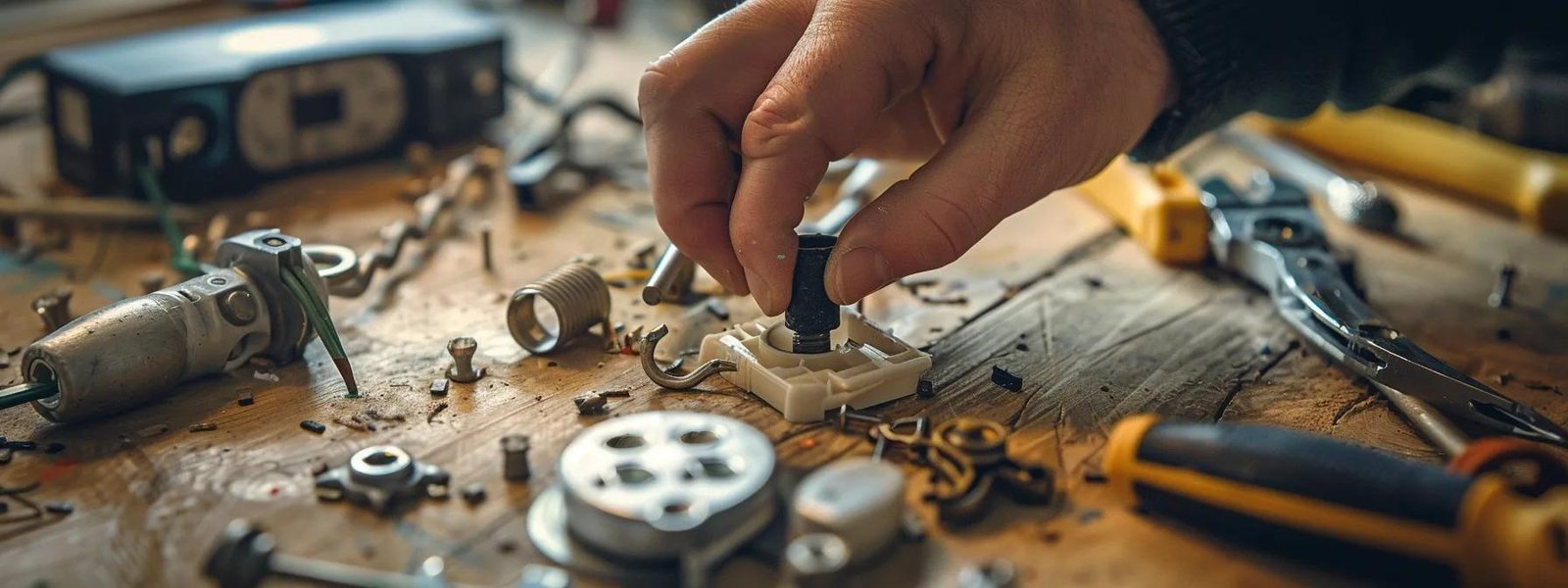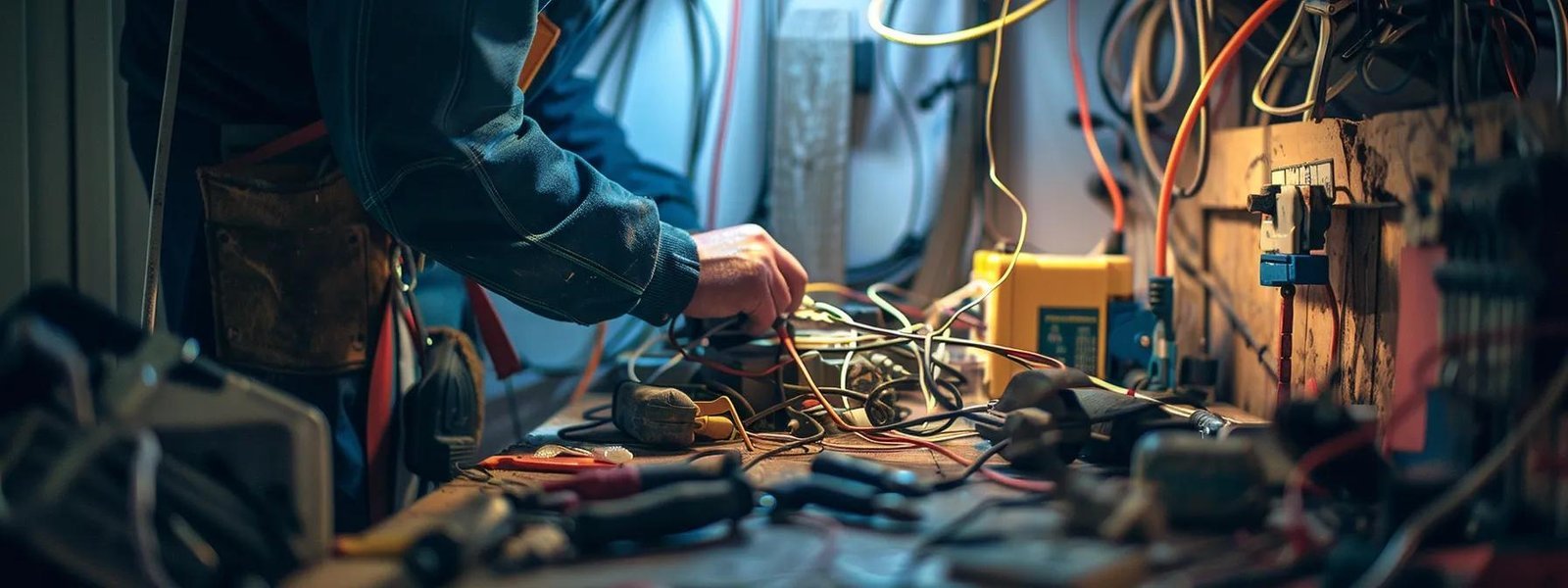
Is your electrical outlet loose and causing concern? A loose outlet can lead to safety hazards, including electrical shorts and fire risks. This guide will walk you through the steps for securely repairing a loose electrical outlet, covering essential tools, safety precautions, and testing methods. By following these instructions, homeowners can gain confidence in performing outlet repair, ensuring their home remains safe and functional. Addressing this common issue not only enhances your electrical diagnostics skills but also helps prevent potential problems with wires and electrical connectors.

Identifying symptoms of a loose electrical outlet is crucial for safety. Common signs include visible gaps between the outlet and the drywall, or the outlet feeling wobbly when a plug is inserted. Loose outlets can pose potential hazards, such as electrical shocks or fire risks due to improper voltage connections. Understanding common reasons outlets become loose, like wear and tear or improper installation, helps homeowners address these issues effectively through electrical diagnostics.
Identifying symptoms of a loose electrical outlet is essential for maintaining safety in the home. Homeowners should look for visible gaps between the outlet and the wall, as well as a wobbly feel when a plug is inserted. These signs often indicate that the screws securing the outlet may be loose, which can lead to issues with electrical wiring and increase the risk of electrical shocks or fire hazards.
Loose electrical outlets can lead to serious hazards, including electrical shocks and fire risks. When an outlet is not securely fastened, it can create poor connections that may cause overheating or arcing, increasing the likelihood of a fire. Homeowners should prioritize addressing loose outlets promptly to ensure their safety and the safety of their property.
Loose electrical outlets can occur for several reasons, primarily due to wear and tear over time. Frequent plugging and unplugging of devices can gradually loosen the screws that hold the outlet in place. Additionally, improper installation during the initial setup can lead to outlets becoming loose, as insufficient tightening of screws or inadequate support can compromise their stability. Homeowners should be aware of these factors to effectively address and repair loose outlets, ensuring safety and functionality in their homes.

To securely repair a loose electrical outlet, homeowners must gather the necessary tools and safety equipment. Essential tools include a screwdriver, voltage tester, and pliers, which will aid in the repair process. Safety gear, such as gloves and safety glasses, is crucial to protect against potential hazards. If replacement parts are needed, knowing where to obtain them ensures a smooth repair experience.
To securely repair a loose electrical outlet, homeowners need to gather specific tools that will facilitate the process. Essential tools include a screwdriver for tightening screws, a voltage tester to ensure safety by checking for live wires, and pliers for handling any wiring adjustments. Having these tools on hand not only streamlines the repair but also enhances safety during the process:
When repairing a loose electrical outlet, wearing appropriate safety equipment is essential to ensure protection from potential hazards. Homeowners should use safety glasses to shield their eyes from debris and gloves to protect their hands from electrical shocks and sharp edges. This simple precaution not only enhances safety during the repair process but also instills confidence in handling electrical components effectively.
If replacement parts are necessary for repairing a loose electrical outlet, homeowners should know where to find them. Local hardware stores typically carry a variety of electrical components, including outlet covers, screws, and wiring. Additionally, online retailers offer a wide selection of parts, often with detailed descriptions to help homeowners choose the right items for their specific needs.

Before starting the repair of a loose electrical outlet, it is essential to prioritize safety. This includes safely turning off the electrical power to the outlet and confirming that the power is completely off using a voltage tester. Additionally, organizing the workspace for easy access to tools and materials will streamline the repair process and enhance efficiency. These steps are crucial for ensuring a safe and effective repair.
To safely turn off electrical power before repairing a loose electrical outlet, homeowners should first locate the circuit breaker panel. Once identified, they must switch off the breaker that controls the specific outlet. It is essential to verify that the power is off by using a voltage tester, ensuring that no live wires are present before proceeding with any repairs.
To confirm that the power is completely off before repairing a loose electrical outlet, homeowners should use a voltage tester. This tool allows them to check for any live wires by placing the tester’s probes into the outlet slots. If the tester indicates no voltage, it is safe to proceed with the repair, ensuring that the homeowner can work without the risk of electrical shock.
Organizing the workspace before starting the repair of a loose electrical outlet is essential for a smooth and efficient process. Homeowners should clear the area around the outlet of any clutter, ensuring that tools and materials are easily accessible. This preparation not only enhances safety by reducing the risk of accidents but also allows for a more focused approach to the repair, making it easier to address any issues that arise during the process.

This section outlines the essential steps to securely repair a loose electrical outlet. Homeowners will learn how to remove the outlet cover plate carefully, inspect and tighten the outlet screws, and adjust or replace the electrical box supports. Finally, the process will cover reassembling the outlet components and securing the outlet back into place, ensuring safety and functionality.
To begin the repair of a loose electrical outlet, homeowners should carefully remove the outlet cover plate. This involves using a screwdriver to unscrew the plate, ensuring not to apply excessive force that could damage the surrounding wall. Once the cover plate is removed, it provides clear access to the outlet itself, allowing for a thorough inspection and necessary adjustments to secure the outlet properly.
Inspecting and tightening outlet screws is a critical step in repairing a loose electrical outlet. Homeowners should carefully check the screws that secure the outlet to the electrical box, as loose screws can lead to poor connections and increase the risk of electrical hazards. By using a screwdriver to tighten these screws, homeowners can ensure that the outlet is firmly in place, reducing the chances of electrical shocks and enhancing overall safety in their homes.
Adjusting or replacing the electrical box supports is a vital step in securing a loose electrical outlet. If the outlet is still wobbly after tightening the screws, it may indicate that the electrical box is not properly anchored. Homeowners should check the stability of the box and, if necessary, add or replace the supports to ensure a firm fit, which will help prevent future issues and enhance safety in the home.
After ensuring that the outlet is securely fastened, homeowners should carefully reassemble the outlet components. This involves replacing the outlet cover plate and ensuring all screws are tightened properly to prevent any future loosening. Taking the time to double-check that everything is aligned correctly not only enhances the outlet’s functionality but also contributes to overall safety in the home.
To secure the outlet back into place, homeowners should carefully align the outlet with the electrical box and ensure that all screws are tightened firmly. This step is crucial, as a well-secured outlet minimizes the risk of future loosening and potential electrical hazards. After tightening the screws, homeowners should replace the outlet cover plate, ensuring it fits snugly against the wall, which not only enhances the outlet’s appearance but also provides an additional layer of safety.

After completing the repair of a loose electrical outlet, it is essential to restore power safely. Homeowners should verify the outlet’s stability and functionality by testing it with a voltage tester. Additionally, checking for any remaining issues ensures that the outlet operates correctly and safely. These steps are crucial for confirming that the repair was successful and that the outlet is secure for everyday use.
Restoring power safely after repairing a loose electrical outlet is a critical step to ensure functionality and safety. Homeowners should first return to the circuit breaker panel and switch the breaker back on for the specific outlet. Once power is restored, using a voltage tester to check the outlet confirms that it is functioning correctly and that there are no live wires present, providing peace of mind that the repair was successful and the outlet is safe for everyday use.
After completing the repair, verifying the outlet’s stability and function is essential for ensuring safety and reliability. Homeowners should gently wiggle the outlet to check for any movement, confirming that it is securely fastened to the wall. Additionally, plugging in a device and observing its performance can help ensure that the outlet is functioning correctly, providing peace of mind that the repair was successful and that the outlet is safe for everyday use.
After completing the repair of a loose electrical outlet, homeowners should thoroughly check for any remaining issues to ensure safety and functionality. This involves inspecting the outlet for any signs of damage, such as burn marks or unusual smells, which could indicate underlying problems. Additionally, plugging in a device and monitoring its performance can help confirm that the outlet is working correctly, providing reassurance that the repair was successful and that the outlet is safe for everyday use.

Homeowners should recognize when a loose electrical outlet may indicate more complex electrical problems that require professional attention. Understanding the importance of adhering to electrical codes is essential for safety and compliance. Finding a licensed professional can provide the necessary expertise to address these issues effectively, ensuring a safe and reliable electrical system in the home.
Homeowners should be aware that a loose electrical outlet can sometimes signal more complex electrical problems. If tightening the outlet screws does not resolve the issue, or if there are signs of burning, sparking, or unusual smells, it may indicate faulty wiring or a malfunctioning electrical box. In such cases, contacting a professional electrician is essential to ensure safety and compliance with electrical codes, as they possess the expertise to diagnose and address underlying issues effectively.
Understanding the importance of electrical codes is vital for homeowners when addressing issues like a loose electrical outlet. These codes are established to ensure safety and compliance in electrical installations and repairs. Adhering to these regulations not only protects the home from potential hazards but also ensures that any electrical work meets the necessary standards, reducing the risk of future problems.
When homeowners encounter persistent issues with a loose electrical outlet, it may be time to seek help from a licensed professional electrician. These experts possess the necessary training and experience to diagnose complex electrical problems that may not be resolved through simple repairs. By hiring a qualified electrician, homeowners can ensure that their electrical systems are safe, compliant with local codes, and functioning properly, ultimately protecting their home and family from potential hazards.
Repairing a loose electrical outlet is essential for maintaining safety in the home and preventing potential hazards like electrical shocks and fires. By following a step-by-step guide, homeowners can effectively identify symptoms, gather necessary tools, and execute repairs with confidence. Understanding when to seek professional help ensures that any underlying issues are addressed, safeguarding the electrical system’s integrity. Prioritizing these repairs not only enhances the functionality of outlets but also protects the well-being of the household.


